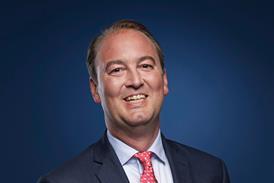The ‘Grexit’ has been deferred - again, this time probably until December - but the recent pullback in share prices has lured strategic stake building in two quoted property companies.

Residential specialist Grainger has seen activist shareholder Crystal Amber buy 3.1% and now Shaftesbury has Langham Estate owner Sammy Lee trying to raise his stake from 3.9% to 13.2%.
Lee is unlikely to get much stock, with the market price of the shares 50p higher than the 888p price being offered. Almost uniquely, Shaftesbury has continuous long-term income growth while the balance sheet of small-lot-sized assets is valued at a discount to the sum of the parts that investors now recognise.
It is still a real estate bull market across Europe, according to CBRE’s EMEA Rents & Yields second-quarter bulletin, which reported that there was “further yield contraction across all property sectors with yields lower by 10 basis points” but that “rental movements remains patchy”. The strongest rent rises in offices markets were in Dublin (5.2%), Barcelona (5.6%) and the City of London (3.1%), while the rest of the UK, including the West End, was flat as a pancake. Prime yields are 3.5% in the West End and 4% in the City, with the regions ranging from 5.25% (Birmingham) to 6.0% (Belfast).
Derwent London’s early move into the City’s fringe ‘Tech Belt’ has met with success at the White Collar Factory, a new-build 237,000 sq ft tower at Silicon Roundabout, Old Street.
The first pre-letting on the lower floors for 70,000 sq ft has been leased at £57.50/sq ft but after factoring in the 24-month rent-free period, this breaks back to £34.50/sq ft. True, RPI linking takes the rent to between £63.50/sq ft and £70/sq ft on the first review, but our estimate of circa £40/sq ft proved overly optimistic.
We are beginning to wonder whether the commercial real estate market is lacking the rental-recovery leg in the cycle and whether what there is has already been factored into cap rates.
If so, real estate is largely a fixed-income investment, with prices having now fully adjusted to zero interest rates. The problem now is that the Bank of England’s Monetary Policy Committee has a couple of members on the brink of voting to raise base rates and the chances of a 2015 hike has increased.
The drag factors on raising rates is sterling’s strength and the lack of inflation with CPI at 0% and likely to stay there to the end of the year. Relative to the 2.0% target, however, the inflation risk has shifted to the upside driven by wage growth, so hang tight for the 2015 ‘Winter of Discontent’ wild-cat strikes.
It’s interesting to follow the conflicting strategies of British Land and Land Securities, which last week confirmed dividend growth of 2.5% and 3.5% respectively.
Paradoxically, Land Securities is more upbeat in its language with “London is humming and retail transformed”, but is in a race to the bottom of its gearing range with its portfolio geared at 27% loan-to-value versus British Land at 37%.
Land Securities has set its gearing guidance in the range 35%-45% through the cycle, which expands to 25%-55% at the top and bottom of the cycle respectively. It looks like Rob Noel really is more cautious in word and deed, and Land Securities shares have outperformed British Land’s by 6% year-to-date.
The real estate industry may be optimistic, but the equity market is beginning to reward REITs with less financial risk.
Mike Prew is managing director and head of real estate at Jefferies






























No comments yet